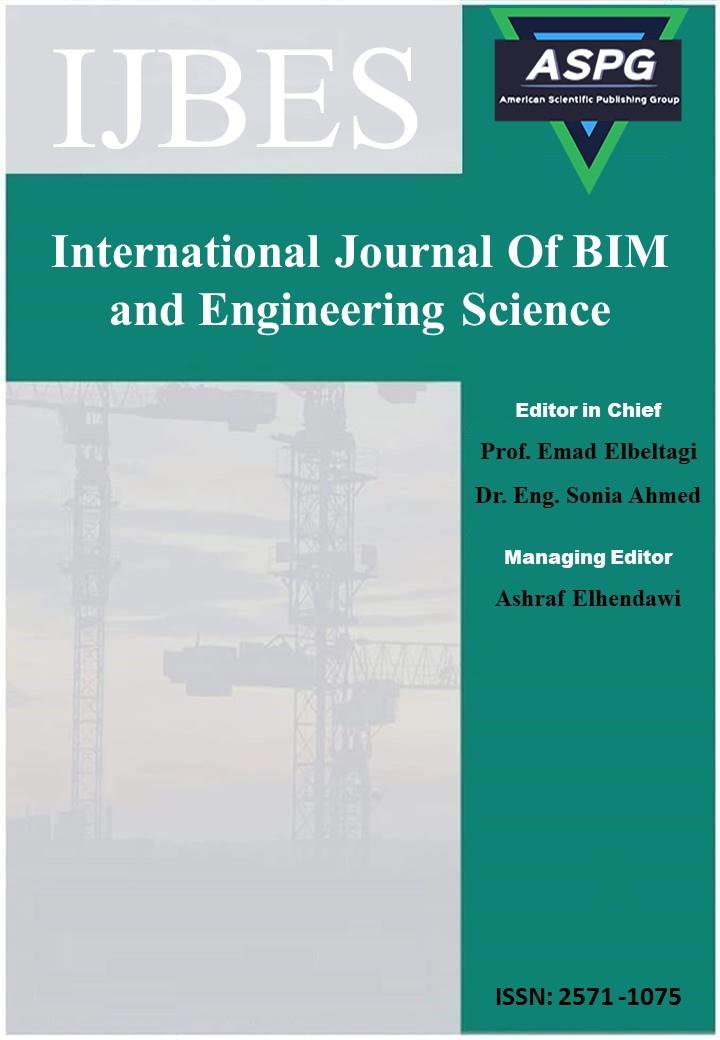

Volume 10 , Issue 2 , PP: 55-66, 2025 | Cite this article as | XML | Html | PDF | Full Length Article
Mary Abou Sekka 1 * , Naoras Khalil 2 , Alaa J. Kadi 3
Doi: https://doi.org/10.54216/IJBES.100206
This study examines the impact of building material modeling on enhancing building sustainability through a case study of a residential building in the city of Basilia. The focus is on using Revit 2023 to model the building and analyze how building materials affect its sustainability. The modeling process includes analyzing the shadows cast by architectural elements and studying their impact on the performance of the building materials. Shadow reflections on energy and material efficiency are measured to determine how building sustainability can be improved through material design and distribution adjustments. Additionally, Revit Insight 2025 is used to evaluate the extent to which natural lighting is achieved through the building envelope and to study the impact of materials on lighting quality and energy efficiency. The research addresses how the building benefits from natural lighting and how this can be optimized with appropriate materials to achieve maximum energy efficiency and reduce environmental impact. The study aims to provide a comprehensive model demonstrating how building sustainability can be enhanced through improved modeling of building materials and analysis of their environmental performance. Through these analyses, the research seeks to offer strategies and recommendations for designing more sustainable and energy-efficient buildings.
, Sustainable Buildings , Green Buildings , Environmental Assessment , Assessment , , Systems , Building Information Modelling (BIM) , Building Envelopes , Building Sustainability , Shadow Analysis , Sustainable Design , Environmental Performance Assessment.
[1] Kalajian, K., S. Ahmed, and W. Youssef, BIM in infrastructure projects. International Journal of BIM and Engineering Science, 2023. 6(2): p. 74-87.
[2] Meng, Q., Zhang ,Y., Li, Z., Shi, W., Wang, J., Sun, Y., Xu, L., Wang, X, A review of integrated applications of BIM and related technologies in whole building life cycle. Engineering, Construction and Architectural Management, 2020. 27(8): p. 1647-1677.
[3] Tao, X., Das, M., Zheng, C., Liu, Y., Wong, P.K.Y., Xu, Y., Liuu, H., Gong, X., Cheng, J.C.P, Enhancing BIM security in emergency construction projects using lightweight blockchain-as-a-service. Automation in Construction, 2023. 150: p. 104846.
[4] Lepkova, N., Maya, R., Ahmed, S., Sarka, V, BIM implementation maturity level and proposed approach for the upgrade in Lithuania. International Journal of BIM and Engineering Science, 2019. 2(1): p. 22-38.
[5] Al Hammoud, E., Comparing Bim Adoption Around the World, Syria’s Current Status and Furture. International Journal of BIM and Engineering Science, 2021. 4(2): p. 64-78.
[6] Saada, M. and H. Aslan, The effectiveness of applying BIM in increasing the accuracy of estimating quantities for public facilities rehabilitation projects in Syria after the war. International Journal of BIM and Engineering Science, 2022. 5(2): p. 08-18.
[7] Kazanci, O.B. and B.W. Olesen, Beyond nearly-zero energy buildings: Experimental investigation of the thermal indoor environment and energy performance of a single-family house designed for plus-energy targets. Science and Technology for the Built Environment, 2016. 22(7): p. 1024-1038.
[8] Hauer, M., Hammes, S., Zech, P., Geisler-Moroder, D., Plörer, D., Miller, J., Karsbergen, V, Integrating Digital Twins with BIM for Enhanced Building Control Strategies: A Systematic Literature Review Focusing on Daylight and Artificial Lighting Systems. Buildings, 2024. 14(3): p. 805.
[9] Safour, R., S. Ahmed, and B. Zaarour, BIM Adoption around the World. International Journal of BIM and Engineering Science, 2021. 4(2): p. 49-63.
[10] Smith, P., BIM & the 5D project cost manager. Procedia-Social and Behavioral Sciences, 2014. 119: p. 475-484.
[11] Chin, L.W., Chai, C.S., Chong, H.Y., Yusof, A., Azmi. N.F, The potential cost implications and benefits from building information modeling (BIM) in Malaysian construction industry. in Proceedings of the 21st International Symposium on Advancement of Construction Management and Real Estate. 2018. Springer.
[12] Patil, M., S. Boraste, and P. Minde, A comprehensive review on emerging trends in smart green building technologies and sustainable materials. Materials Today: Proceedings, 2022. 65: p. 1813-1822.
[13] Allouhi, A., Fouih, Y., Kousksou, T., Jamil, A., Zeraouli, Y., Mourad, Y, Energy consumption and efficiency in buildings: current status and future trends. Journal of Cleaner production, 2015. 109: p. 118-130.